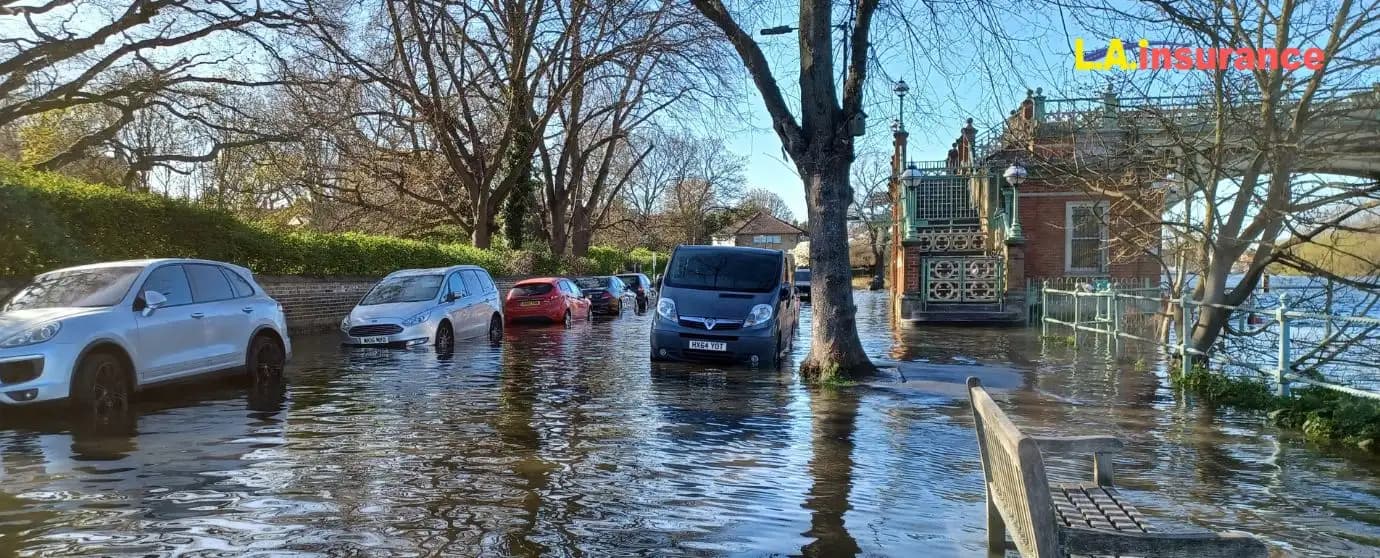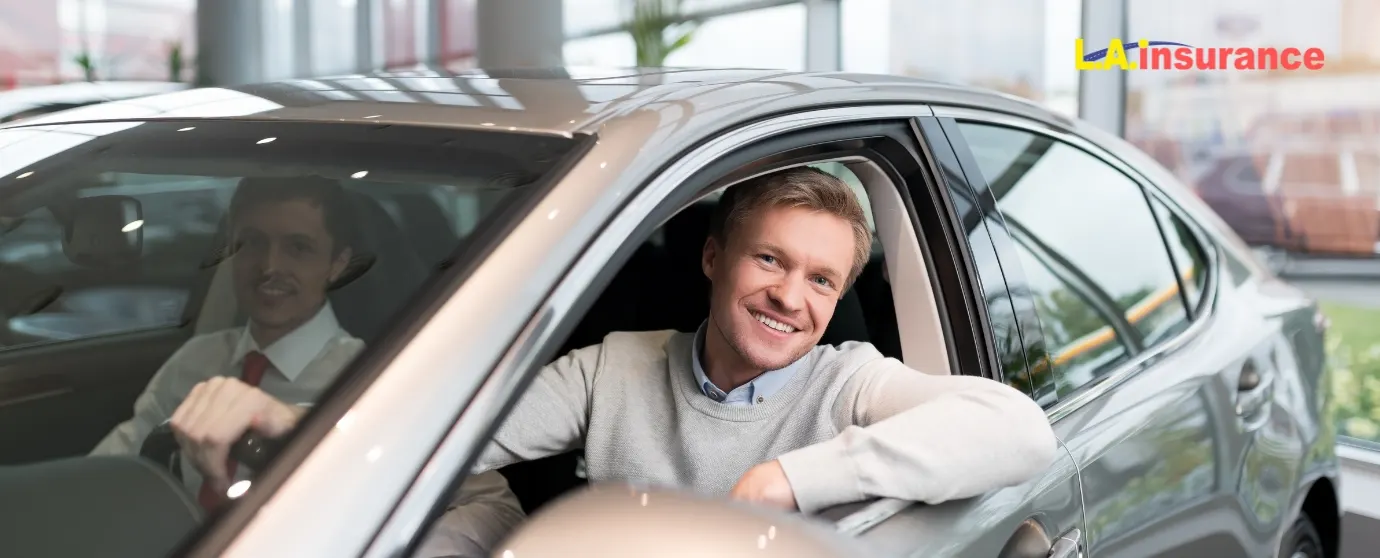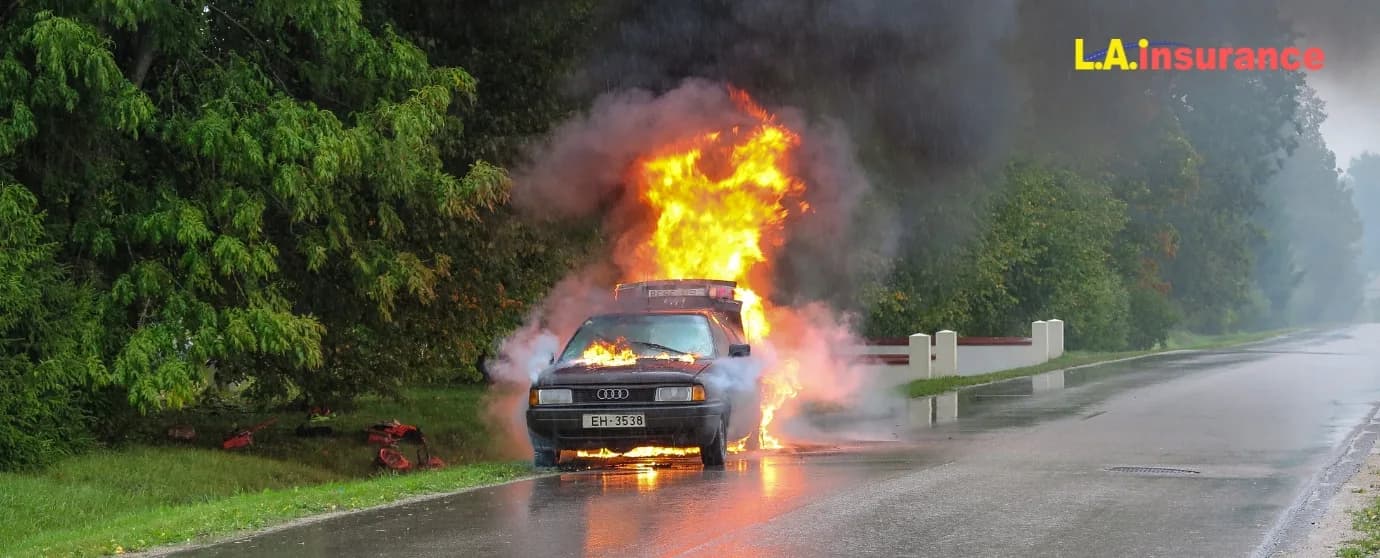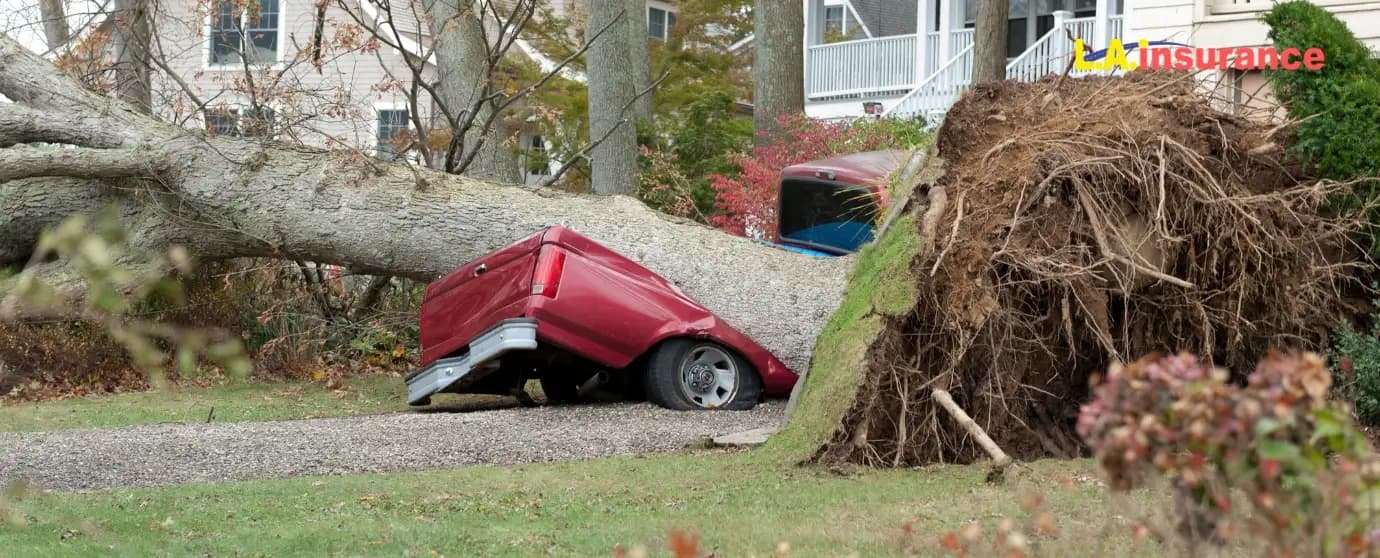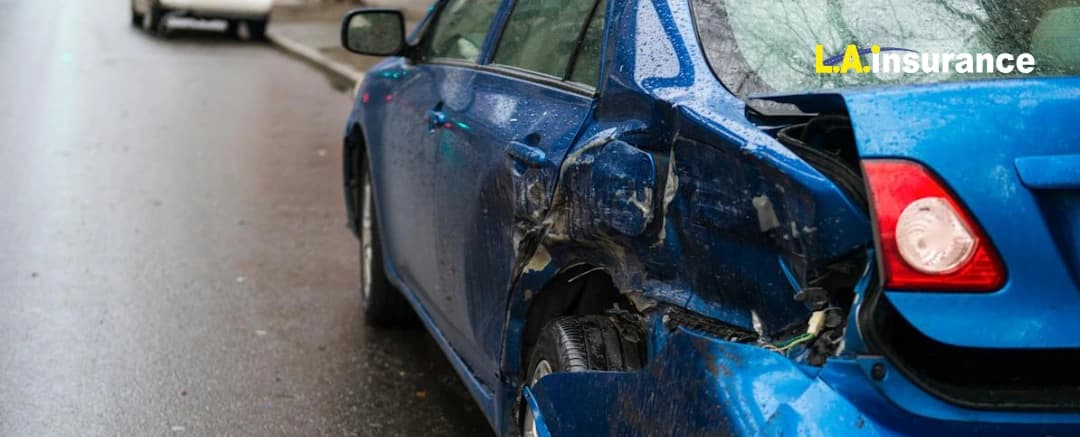
Publish Date: 20-09-2025
Auto Insurance
Does Insurance Cover Hit-and-Run Parked Car?
Hit-and-run cases are on the rise. In 2022, the National Highway Traffic Safety Administration (NHTSA) recorded 859,421 incidents, with 2,854 resulting in fatalities and 74% involving property damage alone. A significant number of these collisions occur in parking lots. With the growing frequency of such accidents, it’s no surprise that many people are left enquiring whether insurance covers damage to parked cars struck by a driver who fled the scene.
The short answer is yes. If your parked car is damaged in a hit-and-run, your insurance can cover it, provided you carry the appropriate type of coverage. In most cases, collision insurance or uninsured motorist property damage (UMPD) coverage are the ones that step in when a driver hits your vehicle and vanishes without a trace. You’ll typically need to pay your deductible, and it’s worth noting that comprehensive coverage won’t apply here unless the damage looks like vandalism.
Types of Auto Insurance Coverage That Pays for a Hit-and-Run Parked Car
If accidents happen, no matter where and how, the prime concern is whether I am covered or not. In case of hit-and-run damage to your parked vehicle, the question remains the same. And luckily, you’re covered if you have the right types of car insurance, which we have already mentioned.
Now, two questions naturally follow:
- What does my car insurance cover?
- What type of insurance will protect me in this situation?
To answer the first, your auto insurance can cover repair costs and, in some cases, temporary transportation expenses while your car is being fixed. If you’re eligible and have the right coverage, it may also include benefits like medical bills and hospital stays for any injuries caused by the incident.
Now the let’s break down the second question. Here are the types of coverage that you need to get paid by your insurer for a damaged vehicle:
Collision Coverage
Collision insurance coverage is the most common protection that can help you for a hit-and-run accident involving a parked car. It pays for repairs if another vehicle hits your car and drives off, whether it happened on a public street or in a parking lot. With collision, your insurance company reimburses you after you pay your deductible.
For example, if repair costs $1,500 and your deductible is $500, your insurer covers the remaining $1,000. This coverage ensures you don’t carry the financial burden when a fault driver disappears.
Uninsured Motorists Property Damage (UMPD) Coverage
Some drivers rely on UMPD coverage as an alternative to collision. This coverage treats the fleeting driver like an uninsured motorist, and that’s how it covers the damage to your parked car. And the advantage of this particular coverage is that it usually comes with a lower deductible than collision. This makes it cheaper when filing a car insurance claim.
However, not every insurer offers this coverage, and its availability can differ from state to state. In some places, you may only be able to use uninsured motorist property damage (UMPD) if the hit-and-run is supported by a police report or evidence of a phantom vehicle. If your state allows it, this coverage can save you hundreds when someone hits your car and disappears without a trace.
Coverage for Injuries and Medical Bills
If you or passengers happen to be inside the vehicle when it’s hit, your insurance policy can also help with injuries. In this case, uninsured motorist bodily injury (UMBI), personal injury protection (PIP), or medical payments (MedPay) coverage can step in. These coverages usually pay for medical treatments, hospital visits, or rehabilitation costs, regardless of whether the other driver is ever identified. If you’re one of the policyholders living in no-fault insurance states like Michigan or Florida, PIP coverage will take effect first. Meanwhile, MedPay can help cover your deductibles or expenses that your health insurance doesn’t fully handle.
Does Comprehensive Insurance Help If Someone Hits My Car in a Parking Lot?
In most cases, comprehensive insurance coverage will not cover a hit-and-run accident in a parking lot. Comprehensive is actually designed for non-collision events only, except for animal collisions. So, if the source of the damage isn’t from events such as vandalism, natural disasters/weather-related damage (e.g., hail damage, hurricane, earthquake, storm), fire, falling objects, or theft, then comprehensive insurance will not pay for it.
However, the only time comprehensive may apply is if the damage to a parked car looks like vandalism rather than an actual hit-and-run incident. For example, if your vehicle is keyed or smashed intentionally, comprehensive coverage pays for repairs after you meet your deductible. But if another car backs into yours and leaves without a note, you’ll certainly need collision insurance or UMPD to file a successful auto insurance claim.
Please note that you’ll also get covered in this situation if you have full-coverage auto insurance, as it combines both collision and comprehensive policies. For reliable coverage, contact L.A. Insurance today. We serve over 10 million policyholders across many states of the U.S., including Michigan, Florida, Texas, Colorado, Georgia, Arizona, and Nevada.
What Happens If You Carry Only Liability?
You won’t get instant coverage with liability auto insurance if another driver damages your parked vehicle and flees the scene. Because liability only covers property damage or injuries you cause to others, not repairs to your own vehicle. So, without collision or UMPD coverage, you’ll likely pay out of pocket for repairs. The only exception is if the fault driver is identified and has valid auto insurance. In that case, their insurance may cover your damages.
When Does Car Insurance Not Cover Hit-and-Run Damage to a Parked Car?
Even with a valid auto insurance policy, there are situations where your car insurance claim may be denied after a hit-and-run accident. Common reasons include:
- Liability-only coverage: This type of auto insurance never pays for your own vehicle damage.
- No Collision or UMPD Coverage: Without either, you’ll have to pay out of pocket for repairs.
- UMPD Restrictions: Some states don’t allow UMPD to apply to hit-and-run incidents unless the fault driver is identified.
- Lack of Proof: If you don’t file a police report or can’t provide evidence (photos, surveillance footage, or a witness), insurers may reject the claim.
- Policy Exclusions or Limit: Claims can also be denied if damages exceed your policy limits or don’t meet the deductible.
What If Someone Hits My Parked Car and Leaves a Note?
If the other driver leaves a note with their contact and insurance information, the process is simpler. You can share that information with the police when filing a report and then notify your insurer. In most cases, your insurance company will work directly with the fault driver’s insurer to handle the car insurance claim and cover the damage to your parked car. This usually means you won’t have to pay your deductible, since the at-fault driver’s policy should cover your repairs.
What If I Hit a Parked Vehicle But There’s No Visible Damage?
Even if you don’t see obvious damage after hitting a parked car, you’re legally required to stop and leave your contact and insurance details. Driving away without doing so can be treated as a hit-and-run incident, which is a crime.
Besides, not all damage is necessarily visible. So, although it might look like “no damage”, it could still mean hidden issues like frame or suspension problems. Failing to notify the police or the vehicle’s owner could lead to fines, penalties, higher insurance premiums, and possible criminal charges. So, the safest steps you can take in this situation are: leave a note, report the accident, and notify your insurer even if the damage seems minor.
Things You Should Do If You Hit a Parked Vehicle
So if you accidentally hit another vehicle in the parking lot, don’t just run away regardless of the extent of the damage. Because if you disappear without a trace, the other driver could sue you or file a report against you. Subsequently, this simple accident could turn into a hit-and-run incident. So, here’s what you should do right away:
Stop and stay calm: Never drive off, even if the damage looks small.
- Leave your details: If you can’t find the other driver, leave a note. Write down your name, phone number, address, and insurance policy information. Place the note somewhere visible, like under the windshield wiper.
- File a police report: Some states require you to call the police or report within 24 hours.
- Document the Scene: Take photos of the other vehicle and location to protect yourself.
- Notify your insurer: Let your insurance company know, even if the other driver hasn’t filed a claim yet.
Parked on a Public Street Vs. Private Lot, Does It Change Coverage?
No, it doesn’t. Whether your car is parked on a public street or in a private parking lot, the type of insurance coverage that applies doesn’t change. A hit-and-run is still treated the same way by your insurance company. And to get repairs covered, you’ll need collision coverage or uninsured motorist property damage (UMPD) coverage. However, the key difference is in finding evidence. Private lots usually have surveillance cameras or a police report to prove the claim.
Immediate Steps You Should Take After Someone Hits Your Parked Car
When your parked car is hit in a hit and run, quick actions help protect your insurance claim. Here’s what you need to do in this circumstance:
- Call the police and file a police report to document the hit-and-run accident.
- Document the scene by taking photos of the damage, location, and debris.
- Look for a witness. Ask anyone nearby if they saw the accident.
- Check for cameras. Nearby businesses or homes may have surveillance footage.
- Save evidence. Collect any vehicle parts or paint left behind.
- Finally, notify your insurer. Report the damage as soon as possible to start the claim process.
Learn more about what to do after a hit-and-run accident.
How Can I Decide Whether to File a Claim Under Collision Vs. UMPD
Now that you know what coverage applies and what you should do if someone hits your parked vehicle and drives away, you might be confused about whether to file a claim under collision or UMPD insurance. These situations especially arise for drivers who carry both coverages. In this regard, the choice usually comes down to deductibles and state rules.
First of all, collision coverage applies everywhere, but it usually has a higher deductible, which can make small repair claims less worthwhile. On the other hand, UMPD coverage often carries a lower deductible, but it isn’t available in every state. Moreover, most of the time, it requires proof of a hit-and-run through a police report.
So, if repair costs only slightly more than your collision deductible, then you should go for UMPD (if eligible). However, if UMPD isn’t offered or the claim doesn’t qualify, you should stick to the collision insurance claim.
Real-Life Example of Handling a Parked Car Damage Claim
In a Reddit Discussion, a driver shared how their parked car and their fiancés vehicle were badly damaged by a hit-and-run driver. The at-fault driver was caught, but their insurance policy only covered up to $25,000, which wasn’t enough to pay for all the repairs. In the end, the couple had to rely on their own collision coverage to cover the remaining costs. The takeaway here is that even when the fault driver is identified, policy limits can leave you in a bad financial situation. So, always prepare to keep reliable coverage or financial backup for any unforeseen events.
Will My Car Insurance Premium Go Up After Filing a Hit-and-Run Parked Car Claim?
Yes, filing a hit-and-run under your own insurance policy can lead to higher premiums. Even though you’re not at fault, insurers usually raise rates when a claim is paid, and you may lose benefits like accident-free discounts or accident forgiveness.
The increase is typically very small compared to the situation where you caused the accident. Unfortunately, if you’re found at-fault after investigation of a hit-and-run case, the penalties could be much more worse than this. You could face civil fines, legal disputes, or you might need to file an SR-22 insurance certificate, or FR-44 if you’re in Florida or Virginia.
However, fortunately, if the at-fault driver is identified and you file a claim under their insurance policy, your premium will not be affected.
State-Specific Limitations and Laws Regarding Coverage for Hit-and-Run Parked Cars
State laws vary. And every state doesn’t really similarly treat a hit-and-run accident. In some states, UMPD coverage can’t be used unless the fault driver is identified or the damage is supported by a police report.
For example, California state laws require proof of contact and identification of the uninsured fault driver for UMPD claims to be valid. In that case, if you or the authority fails to identify the fault driver, your only option is collision insurance coverage.
Besides, some states don’t even offer UMPD. If that is your case, you must have collision insurance coverage to receive compensation from your insurance carrier.
It's also important to note that penalties for fleeing drivers also vary, with some states classifying serious property damage as a felony. Because rules differ widely. So, the best practice here is to review your insurance policy and state laws before you file a claim.
Prevention and Proof Tips for Hit-and-Run Parked Vehicle
You can’t always stop a hit-and-run accident, but smart steps can lower the risk and strengthen your car insurance claim if it happens.
- Park in well-lit areas: Bright spots deter reckless drivers and help capture clear camera footage.
- Choose camera coverage: Park near surveillance cameras or install a dashcam with parking mode.
- Avoid high-traffic spots: Entrances, corners, and cart-heavy areas increase the chance of damage.
- Document your car regularly. Keep photos of your vehicle’s condition for easier proof.
- Collect evidence quickly. If a hit-and-run incident happens, save debris, paint transfer, or witness details.
- Keep a claim kit handy. Insurance card, VIN, and a quick checklist to use after an accident.
FAQs About Car Insurance Coverage for Hit-and-Run Incidents Involving Parked Cars
Can the owner of a parked car ever be blamed for an accident?
Rarely. Unless the car was parked illegally or blocking traffic, the fault usually falls on the driver who hit it.
Does insurance cover hit and run parked car in Florida?
Yes, but you’ll need collision coverage. Florida does not allow UMPD coverage for hit-and-run property damage.
Will my insurance cover hit-and-run damage to my parked vehicle in Michigan?
Michigan drivers may need collision coverage since the state's no-fault rules limit when UMPD applies.
Does full coverage car insurance cover hit-and-run damage to a parked vehicle?
Yes. If you have full coverage car insurance, you’ll be covered under collision coverage, as it is included in the full coverage policy. Besides, if the hit-and-run accident damage looks like vandalism, your insurance company may even pay you through comprehensive coverage.
Do I have to pay deductible if someone hits my parked car?
Yes, if you use collision or UMPD coverage, your deductible applies before your insurer pays.
Is it worth filing a claim for a hit-and-run?
It depends on repair costs versus your deductible. For minor damage, paying out of pocket may make more sense.
How to get insurance to cover a hit-and-run?
File a police report, document the damage, and notify your insurer. You’ll receive your compensation without any trouble if you’ve the right sort of coverage, like collision insurance or UMPD coverage.
Tag :
Auto insurance
Comercial Auto
